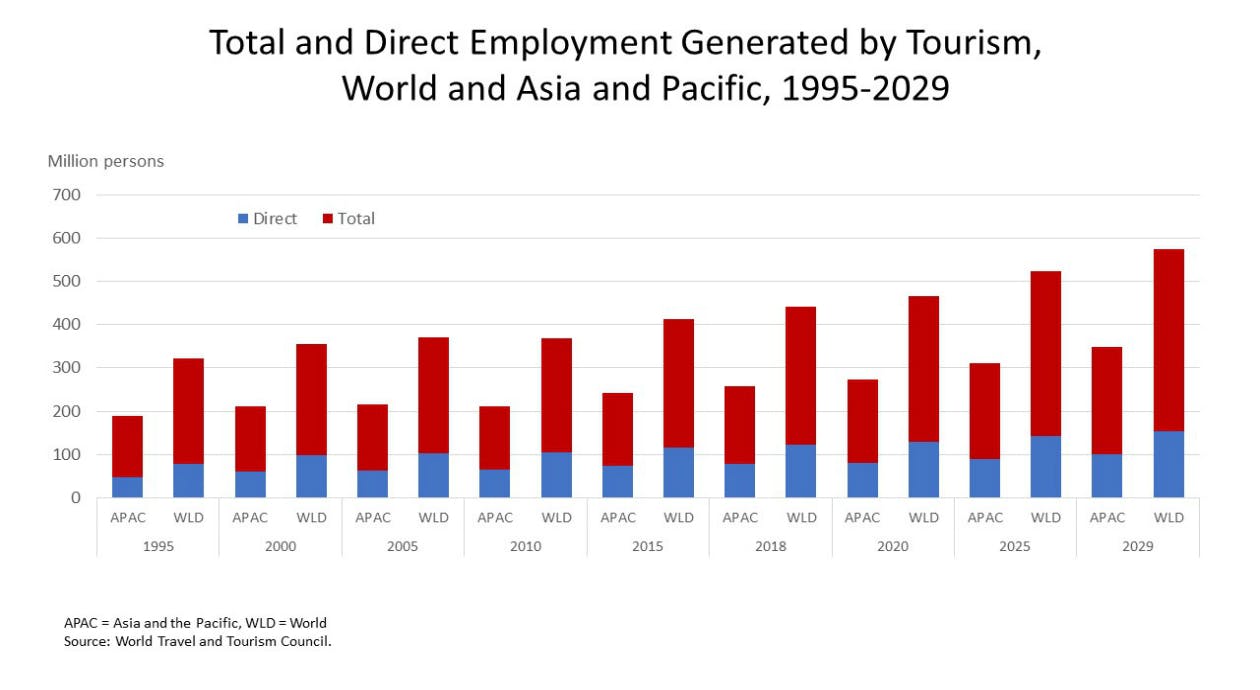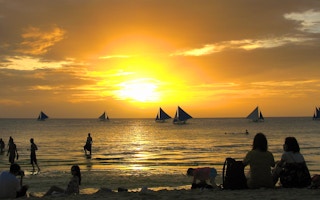Tourism is one of the fastest growing industries in the world, and Asia is one of the hottest destinations. Though it generates sizable economic effects, there is a growing recognition that tourism is a double-edged sword. For example, large numbers of tourists can seriously damage the natural and cultural heritage of destinations. However, there are plenty of options available to policymakers to promote sustainable tourism which benefits both visitors and hosts.
Since 2011, global international arrivals have been growing at an average annual rate of 4.8 per cent, adding about 55 million new visitors each year, to reach 1.4 billion in 2018.
Furthermore, international tourist receipts expanded by 4.3 per cent per year since 2011, adding an average of $54 billion annually, to reach $1.34 trillion in 2018. Domestic tourism, too, has made impressive strides, with global receipts hitting $4.1 trillion in 2018, far more than international tourism.
“
Leveraging tourism to promote sustainable development will require a tough balancing act between development and sustainability. Asian countries are up to the challenge and already making some headway.
In Asia tourism is taking off. Of the 1.4 billion visitors who travelled abroad in 2018, 343 million went to Asia. And, of the $1.34 trillion of international tourist receipts in 2018, $390 billion was spent in Asia. Asia thus accounts for 25 per cent of international visitors and 29 per cent of international tourist spending. International arrivals rose by 65 per cent in Asia between 2010 and 2018, compared to 47 per cent globally.

The economic effect of tourism can be measured narrowly—calculating only direct effects such as expenditures on hotels and airlines—or more broadly—including indirect effects such as tourism-related investment. For example, the purchase of new airplanes or construction of hotels. Globally, the direct and total economic impact of tourism amounted to $8.60 trillion and $2.67 trillion in 2018, respectively. In Asia, the corresponding figures were $2.94 trillion and $0.92 trillion.
Like its impact on output, the impact of tourism on employment can be measured narrowly or more broadly to encompass effects such as tourism-related investment. In 2018, tourism directly generated 123 million jobs worldwide (3.8 per cent of total global employment) and its contribution to global employment is even larger if we include secondary effects—319 million jobs or 10 per cent of global employment.
The corresponding figures for Asia are 78 million and 180 million jobs. Tourism can also contribute to inclusive growth and more balanced national development by bringing investment to remote areas with tourist attractions.
Notwithstanding the huge benefits of tourism, concerns about its sustainability are mounting. In destinations from Iceland to Palau, tourism is proving to be a victim of its own success with too many visitors overwhelming local communities, causing prices, rents and land values to rapidly rise, and threatening natural and cultural heritage. The term overtourism is gaining currency, and the phenomenon is provoking a backlash from local communities.

The concept of sustainable tourism is based on the concept of sustainable development. Broadly speaking, according to the United Nations, sustainable development refers to economic and social development that meets the needs of the current generation without jeopardising the ability of future generations to meet their own needs.
Likewise, according to the World Tourism Organization, sustainable tourism refers to tourism which meets the needs of tourists and host countries at present while protecting and enhancing the future opportunities of tourists and host countries.
Sustainable tourism requires concerted effort in five areas. Sustainability is inherently a multidimensional concept and, as such, achieving sustainability requires tackling a number of different areas. These include economic growth; employment generation; environmental protection; cultural heritage, and mutual understanding and respect.
In order to achieve more sustainable tourism, there must be concrete progress in all five areas. This is why a holistic approach is required. Effective governance and policies are required for operationalising each of the five pillars. The challenge lies in ensuring the necessary financial resources and capacity within government agencies for implementation.
Encouragingly, Asian countries are taking action to promote sustainable tourism. For example, in 1996 the Cambodian government set up a dedicated authority to promote and manage the cultural heritage of Angkor Wat, and maximize benefits for communities at and near the sites.
In Fiji, the government imposes a 10 per cent tax on annual gross turnovers of tourism-related businesses to fund climate change mitigation projects. And, the Indian state of Kerala set up a program which trained about 650 residents of poor and vulnerable communities for employment in local hotels.
Fast-growing tourism is here to stay. Leveraging tourism to promote sustainable development will require a tough balancing act between development and sustainability. Asian countries are up to the challenge and already making some headway.
Donghyun Park is Principal Economist, Economic Research and Regional Cooperation Department and Cynthia Castillejos-Petalcorin is Senior Economics Officer, Economic Research and Regional Cooperation Department at ADB. Scott Wayne is the President at SW Associates, an international consulting practice focused on sustainable development through tourism for both public and private sector clients and organisations.
This article was first published by the Asian Development Bank.




















